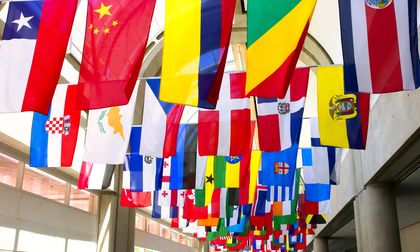United Nations Vs League of Nations Similarities And Differences: A Comparative Analysis
The United Nations (UN) and League of Nations (LN) both aimed to maintain global peace and prevent conflicts. The UN succeeded where the LN failed due to structure and membership differences.
The League of Nations was established after World War I to prevent future conflicts, but it lacked enforcement power and universal membership. Its failure led to World War II, prompting the creation of the United Nations in 1945. The UN was designed with a stronger framework, including a Security Council with permanent members and broader international participation.
The UN focuses on peacekeeping, human rights, and development, making it more effective in addressing global issues. Understanding the similarities and differences between these organizations helps explain their respective successes and failures in promoting global peace.
Origins And Founding Principles
Both organizations emerged after major wars. The League of Nations was created after World War I. The United Nations was formed after World War II. Their main goal was to maintain peace. They aimed to prevent further wars.
The League of Nations had 42 founding members. Major powers like the United States did not join. The United Nations started with 51 members. It included all major world powers. The UN aimed for global cooperation. The League struggled with lack of support from key countries.
Organizational Structure
The United Nations has six main bodies. These include the General Assembly and the Security Council. The League of Nations had three main bodies. These were the Assembly, the Council, and the Secretariat. Both organizations aimed for international peace and cooperation. The UN’s structure is more complex than the League’s. The UN includes more agencies and programs.
The UN requires a two-thirds majority for major decisions. The Security Council has five permanent members with veto power. The League of Nations required unanimous decisions in its Council. This made it harder to make decisions. The UN’s General Assembly can pass resolutions with a simple majority. The League’s Assembly also needed unanimity for important issues. Both systems aimed to ensure fair decisions.
Mandates And Goals
Both the United Nations (UN) and the League of Nations aimed to keep peace. The UN has peacekeeping missions in many countries. The League of Nations also had efforts to stop wars. The UN has more success in peacekeeping. The UN sends troops to troubled areas. The League of Nations did not have its own army.
The UN promotes human rights worldwide. It has the Universal Declaration of Human Rights. The League of Nations also cared about human welfare. The UN has many agencies to help people. The League of Nations had fewer resources. The UN works to stop abuse and exploitation. The League of Nations tried but was less effective.

Credit: www.nationsencyclopedia.com
Membership And Participation
The United Nations has more than 190 member countries. The League of Nations had about 60 member countries at its peak. The United Nations includes almost every country in the world. The League of Nations did not include many major powers. Both aimed for global peace and cooperation.
The United Nations requires countries to accept its charter. The League of Nations required countries to agree to its covenant. The United Nations accepts new members by a General Assembly vote. The League of Nations needed approval from its council for new members. Both organizations aimed to include many countries.
Successes And Failures
The United Nations (UN) helped in ending many conflicts. Peacekeeping missions by the UN saved lives. The League of Nations (LoN) had some success in the 1920s. It resolved disputes between small nations. Both organizations aimed for world peace.
The League of Nations failed to prevent World War II. Many countries ignored its decisions. The United Nations also faced failures. It could not stop the Rwanda Genocide. Both organizations struggled with global cooperation.

Credit: www.coursehero.com

Credit: slideplayer.com
Frequently Asked Questions
What Are The Differences Between League Of Nations And United Nations?
The League of Nations lacked enforcement power and US membership. The United Nations has stronger enforcement mechanisms and US participation. The UN also includes a wider range of member countries and addresses more global issues.
What Were The Similarities Between League Of Nations And United Nations?
Both aimed to promote peace and security. They established international cooperation frameworks. Both had member nations and a council. They addressed global conflicts and humanitarian issues.
In What Ways Is The United Nations Similar To The League Of Nations?
Both the United Nations and the League of Nations aim to promote international peace and cooperation. They both encourage diplomatic conflict resolution. Both organizations involve multiple member states and focus on collective security. They also work on humanitarian issues and international law.
What Is The Difference Between Un And United Nations?
The UN and United Nations are the same entity. “UN” is simply an abbreviation for “United Nations. “
Conclusion
Understanding the similarities and differences between the United Nations and the League of Nations is crucial. Both organizations aimed at promoting global peace and cooperation. While they share common goals, their structures and effectiveness differ. Analyzing these aspects helps us appreciate the evolution in international diplomacy and governance.



